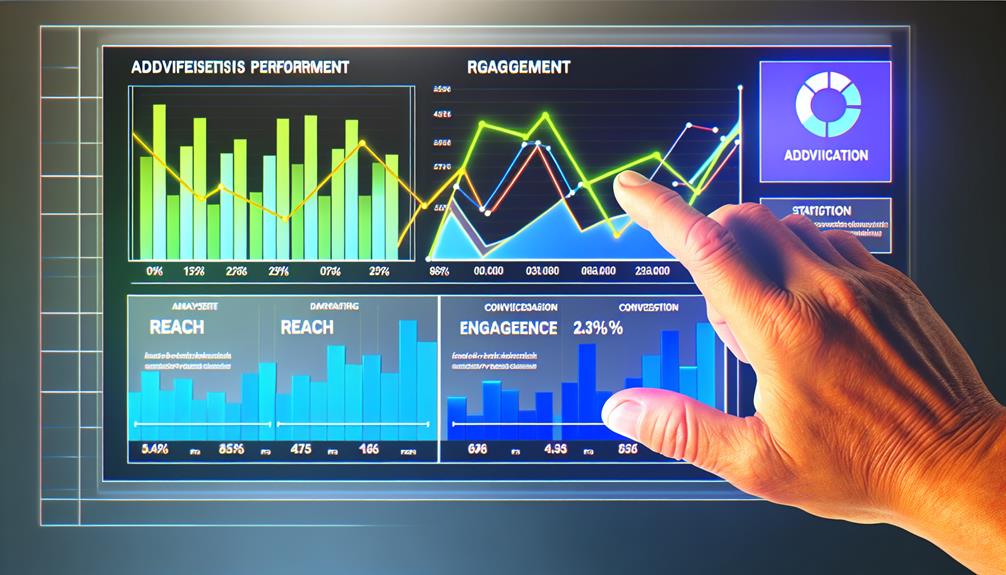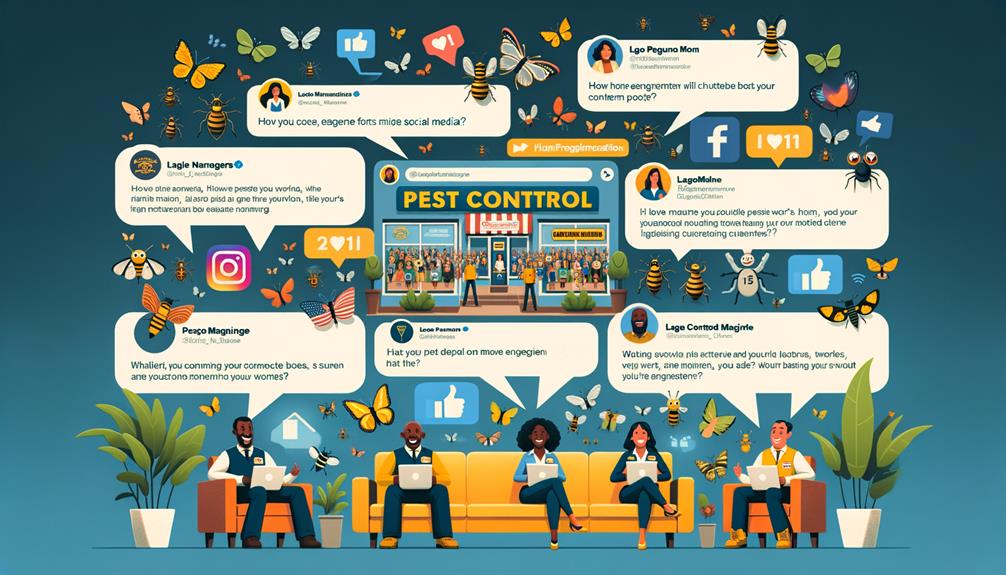Imagine a world where pesky pests are a thing of the past, where your pest control business is the go-to solution for every homeowner in need.
Social media holds the key to unlocking this potential, allowing you to reach a vast audience and establish your expertise in the industry.
But how can you ensure that your business stands out amidst the noise?
In this discussion, we will explore the strategies and techniques that will maximize your pest control business’s reach on social media, helping you to connect with your target audience and grow your customer base.
Stay tuned to discover the secrets of effective social media marketing for pest control businesses.
Table of Contents
ToggleKey Takeaways
- Choose the right social media platforms that align with your target audience and business goals.
- Identify your target audience through demographic analysis and market research.
- Craft compelling ad copy that highlights the benefits of your services and includes a clear call to action.
- Optimize your ad campaigns for conversions by tracking metrics, conducting A/B testing, and continuously analyzing and adjusting performance.
Choosing the Right Social Media Platforms

When it comes to choosing the right social media platforms for your pest control business, it’s important to be strategic and deliberate in order to effectively reach your target audience. Understanding the social media advertising trends and building brand awareness are crucial components of your strategy.
Firstly, let’s dive into the social media advertising trends. Facebook remains a dominant platform for businesses due to its wide reach and advanced targeting options. With over 2.8 billion monthly active users, it provides a valuable opportunity to connect with potential customers.
Instagram is also on the rise, especially for businesses that can showcase visually appealing content. Its growing user base and emphasis on visual storytelling make it an ideal platform for building brand awareness.
Speaking of brand awareness, social media platforms like Twitter and LinkedIn can play a significant role. Twitter’s real-time nature allows you to engage with your audience through timely updates and industry news. LinkedIn, on the other hand, is a professional networking platform that can help you establish your business as an industry leader and connect with potential clients.
Identifying the Target Audience
Now that you have a clear understanding of the social media platforms that are effective for your pest control business, it’s time to pinpoint your target audience.
Understanding consumer behavior and conducting market research are essential in identifying the people who are most likely to be interested in your services.
To start, consider the demographics of your existing customers. Look at factors such as age, gender, location, and income level. This information will give you a good starting point in understanding who your target audience is.
Next, dig deeper into their behaviors and interests. Are they homeowners or renters? Do they have pets? Are they environmentally conscious? Understanding these aspects will help you tailor your messaging and content to resonate with them.
Conducting market research is also crucial in identifying your target audience. Use surveys, focus groups, or social media listening tools to gather insights about what motivates your potential customers and what challenges they face in pest control.
Crafting Compelling Ad Copy

Craft persuasive ad copy that captivates your target audience and compels them to take action. Creating engaging visuals and crafting persuasive messaging are essential elements for crafting compelling ad copy.
When it comes to visuals, choose images or videos that are eye-catching and relevant to your pest control business. Show before and after pictures of infested areas transformed into clean and pest-free spaces. This will grab your audience’s attention and demonstrate the effectiveness of your services.
In terms of messaging, focus on highlighting the benefits of your pest control services. Use strong and persuasive language to convey the value and urgency of your offerings. For example, emphasize the importance of protecting one’s home or business from pests and the potential health risks associated with an infestation. Make sure to include a clear call to action, such as ‘Call now for a free inspection’ or ‘Book your pest control appointment today.’
Keep your ad copy concise and to the point. People have short attention spans, especially on social media, so it’s important to deliver your message quickly and effectively. Use bullet points or short paragraphs to break up the text and make it easier to read. Additionally, consider using testimonials or reviews from satisfied customers to build trust and credibility.
Crafting compelling ad copy requires a strategic approach. By following these tips and incorporating engaging visuals and persuasive messaging, you can create ads that captivate your target audience and drive them to take action.
Optimizing Ad Campaigns for Conversions
To ensure the success of your pest control business on social media, it’s crucial to optimize your ad campaigns for conversions, strategically driving your target audience to take action.
One important aspect of optimizing ad campaigns is tracking metrics. By closely monitoring the performance of your ads, you can gain valuable insights into what’s working and what needs improvement. Metrics such as click-through rates, conversion rates, and cost per conversion can provide valuable data to help you make informed decisions about your ad campaigns.
Another effective strategy for optimizing ad campaigns is A/B testing. This involves creating multiple versions of your ads and testing them against each other to see which one performs better. By testing different elements such as headline, image, or call-to-action, you can identify the most effective combinations and make data-driven improvements to your campaigns.
In addition to tracking metrics and A/B testing, it’s important to continuously analyze and optimize your targeting. Refine your audience based on demographics, interests, and behaviors to ensure that your ads are reaching the right people. Regularly review and adjust your targeting parameters to maximize the effectiveness of your campaigns.
Analyzing and Adjusting Ad Performance

You can gain valuable insights into the performance of your ad campaigns by analyzing and adjusting ad performance. By closely monitoring and evaluating the data, you can make informed decisions to optimize your ad targeting and maximize your reach.
Here are three key steps to help you analyze and adjust your ad performance effectively:
- Track your metrics: Start by identifying the key performance indicators (KPIs) that are most relevant to your pest control business. These could include metrics such as click-through rates, conversion rates, and cost per acquisition. Use tracking tools provided by social media platforms or third-party analytics tools to monitor these metrics regularly.
- Analyze the data: Once you have collected enough data, analyze it to identify patterns, trends, and areas for improvement. Look for insights on which ad campaigns are performing well and which ones are underperforming. Segment your data based on different variables such as demographics, interests, or ad placements to gain a deeper understanding of your audience and their preferences.
- Make adjustments: Armed with the insights from your data analysis, make strategic adjustments to your ad campaigns. This could involve refining your targeting parameters, tweaking your ad creatives, or adjusting your bidding strategies. Continuously monitor the impact of these changes and make further adjustments as needed to optimize your ad performance.





